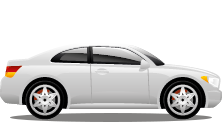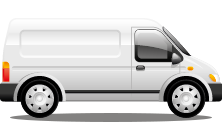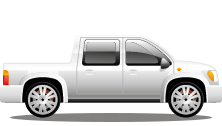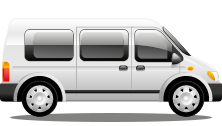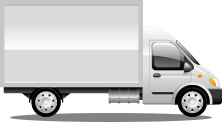Driving in the UK
Some essential information about driving in the UK
Driving on the left
It's important to remember that in the UK we drive on the left hand side.
Roundabouts
The UK has a large number of roundabouts. While European visitors may be familiar with them American visitors may not. The simple rules of a roundabout are:
Always give way to all traffic from your right
Travel clockwise (even if it means you have to go all the way round to get to your junction)
Driving Licence and Insurance
The holder of an overseas driving licence may, for a period of up to one year, drive a motor vehicle in Britain. EU drivers must possess a driving licence and either a passport or ID card.
Drivers outwith the EU must possess a valid domestic driving licence with English translation. If English translation is not available, an international driving permit is required in addition to a domestic driving licence. A passport must also accompany a domestic driving licence.
Drinking & Driving
It is an offence to drink and drive. If caught and convicted, the criminal penalties are severe.
Speed Limits
Unless otherwise signposted, speed limits on UK roads are:
Jack's Self Drive has a large variety of child car seats available to hire at the time of booking or at the time of hire from the pick-up branch, subject to availability. It is the driver's legal responsibility to ensure the child is correctly restrained.
Cars & Motorcycles
Including car derived vans up to 2 tonnes maximum laden weight
Built-up Areas

Single Carriage Way

Dual Carriage Way

Motorway

Cars Towing
Including car derived vans and motorcyles
Built-up Areas

Single Carriage Way

Dual Carriage Way

Motorway

Buses and Coaches
Not exceeding 12m in overall length
Built-up Areas

Single Carriage Way

Dual Carriage Way

Motorway

Goods Vehicles
Between 2 and 7.5 tonnes maximum laden weight
Built-up Areas

Single Carriage Way

Dual Carriage Way

Motorway

Goods Vehicles
Exceeding 7.5 tonnes maximum laden weight
Built-up Areas

Single Carriage Way

Dual Carriage Way

Motorway

All speeds stated are national speed limits in miles per hour (mph) and apply to all roads unless signs show otherwise.
The 30 mph limit applies to all traffic on roads in England and Wales (only Class C and unclassified roads in Scotland) with street lighting unless signs show otherwise.
Built up areas generally have roads with street lights. Unless signed otherwise, the speed limit is always 30mph, no matter the number of lanes.
Single Carriageway is an undivided road with no central reservation
Dual Carriageway is a two way divided road with a central reservation that you are able to cross from side roads.
Motorway is a two way divided road with a central barrier containing slip roads. It is only possible to access a motorway via slip roads and there is no crossway traffic.
Unmarked police cars patrol regularly and remote speed cameras are positioned on many roads.
Fuel
Many fuel stations throughout the country are open 24 hours a day and all provide unleaded and lead-replacement petrol and diesel. In remote areas, distances between stations are greater and opening hours may be shorter. Fuel is priced and sold by the litre.
To get your moneys worth and best performance out of your vehicle we recommend the following petrol stations:
- Esso
- BP
- Shell
These premium stations offer better quality of mile to gallon ensuring your car hire experience is a smooth journey.
Seat Belts
It is compulsory to wear seat belts, both front and rear. Small children and babies must be restrained in an appropriate child car seat or carrier. Child car seats should be ordered when you book your car.
Mobile Phones (Cell Phones)
It is an offence to drive a vehicle whilst using a mobile phone, unless the phone can be operated "hands-free". Police can issue spot fines, which may be as high as £1000.
London Congestion Charging
If you are looking for PCO Hire then first you have to know the London congestion charging zone is bounded by the 'Inner Ring Road' linking Euston Road, Pentonville Road, Tower Bridge, New Kent Road, Vauxhall Bridge Road, Park Lane and Marylebone Road. The 'Inner Ring Road' provides a route round the charging zone, and charges apply only to vehicles travelling inside it. Charges do not apply if travelling on the 'Inner Ring Road'. Drivers are warned on roads leading into the zone that they are approaching the charging zone.
For more information on the London Congestion Charge rules and regulations, including penalty charges and how to pay a fine, visit the Transport for London website www.tfl.gov.uk or call 0845 900 1234.
Bus Lane Enforcement
Bus Lane Enforcement has been introduced in a number of cities across the UK to help improve the free flow of congested bus lanes, improve the overall traffic flow on city roads and improve road safety.
For more information on the specific bus lane enforcement regulations and penalty charge notices that may apply in the city you are driving in, please visit the cities local council website.

